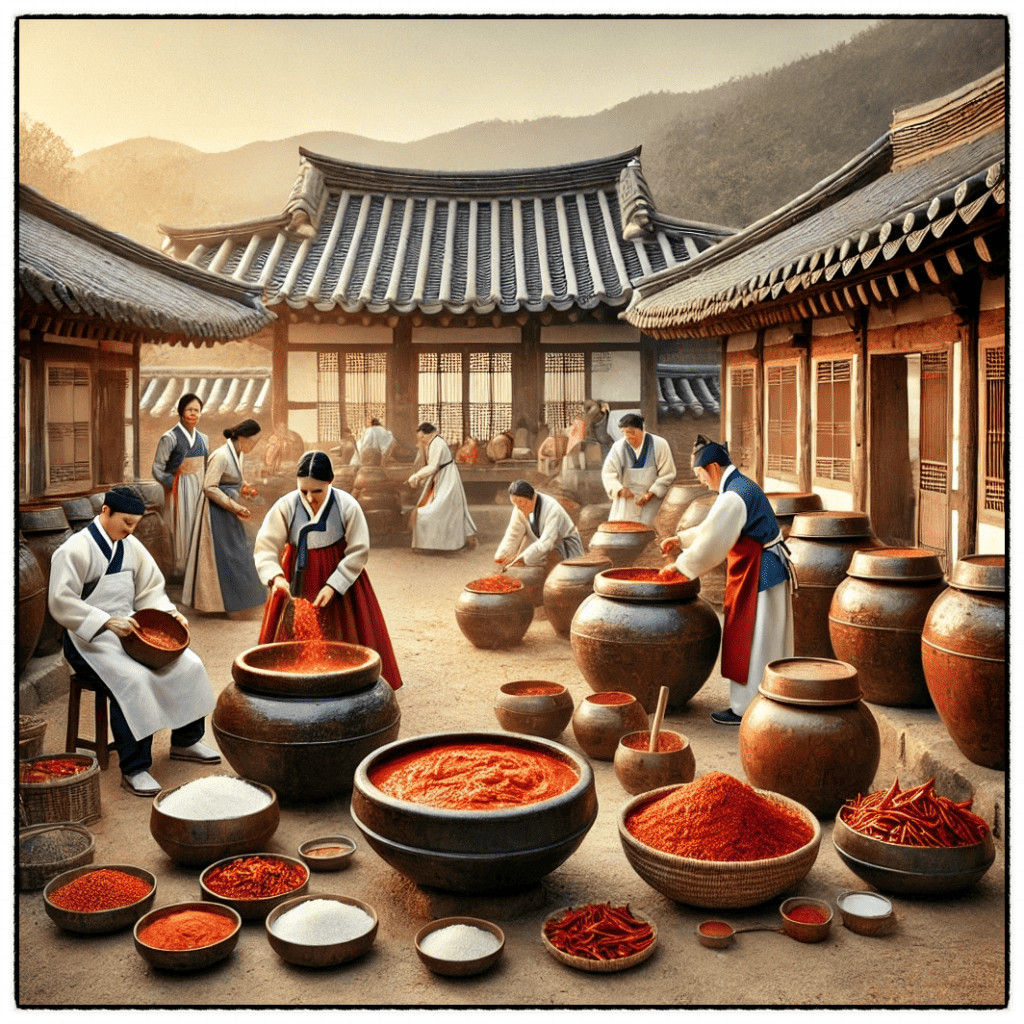The History and Health Benefits of Korean Fermented Foods
Discovering Korean Fermented Foods
When people think about Korean food, one word comes to mind again and again: fermentation. From the spicy crunch of kimchi to the earthy depth of doenjang, fermentation is at the heart of Korean cuisine. It’s what gives Korean food its bold flavors, long shelf life, and incredible health benefits.

A Brief History of Fermentation in Korea
Origins in Ancient Times
Fermentation in Korea began as a way to preserve food during long winters. Archaeological findings suggest that Koreans were fermenting grains and vegetables thousands of years ago. Over time, these methods became deeply woven into everyday life and celebrations.

Fermentation in Daily Life and Culture
In Korea, fermentation is more than a technique – it’s a tradition. Families used to gather for kimjang (kimchi-making) each year, while doenjang and gochujang jars sat quietly in the yard, slowly developing flavor. These foods weren’t just condiments; they symbolized health, patience, and community.
Iconic Korean Fermented Foods
Kimchi – Korea’s Global Ambassador
Kimchi is Korea’s most famous fermented food, loved worldwide for its bold flavors and health benefits. Made from napa cabbage, radish, chili flakes, garlic, and fish sauce, it comes in hundreds of variations depending on region and season.

Doenjang – Fermented Soybean Paste
Doenjang is Korea’s answer to miso, but it’s stronger, richer, and packed with umami. It’s made by fermenting soybeans and brine for months in clay jars, creating a paste used in stews (doenjang jjigae) and sauces.


Gochujang – Spicy Chili Paste
This thick, red paste made from chili powder, glutinous rice, and fermented soybeans is the backbone of many Korean dishes. Gochujang balances sweet, spicy, and savory flavors, making it a must-have for bibimbap, tteokbokki, and marinades.

Makgeolli – Traditional Rice Wine
Makgeolli is a slightly sweet, milky rice wine made through fermentation. Traditionally enjoyed by farmers, it’s now popular among young people and foodies. Low in alcohol and rich in probiotics, it’s both fun and healthy.

The Science Behind Fermentation
Fermentation is a natural process where microorganisms like bacteria and yeast break down sugars into acids, gases, or alcohol. In Korean cuisine, lactic acid bacteria play the starring role, giving kimchi its tang and doenjang its deep complexity.
What’s fascinating is that these microbes don’t just preserve food – they enhance its nutritional value. Proteins are broken into amino acids, starches into simple sugars, and the result is food that’s easier to digest and more flavorful.
Health Benefits of Korean Fermented Foods
Probiotics and Gut Health
Kimchi, makgeolli, and doenjang are loaded with probiotics. These “good bacteria” restore balance in the gut microbiome, which can improve digestion, reduce bloating, and even affect mental health positively.
Boosting Immunity
Fermented foods help strengthen the immune system by supporting gut health. A strong gut microbiome can better defend the body against harmful pathogens and viruses.
Nutrient Absorption and Longevity
The fermentation process not only creates vitamins (like B vitamins and vitamin K2) but also makes minerals such as iron and calcium easier for the body to absorb. Studies link regular consumption of fermented foods with improved metabolism and even longer life expectancy.

How to Incorporate Fermented Foods into Your Diet
Adding Korean fermented foods to your daily life is easier than you think:
- Have a small serving of kimchi with meals.
- Use gochujang in marinades or salad dressings.
- Add a spoon of doenjang to soups or stews.
- Enjoy makgeolli as a light, probiotic-rich drink.
Small changes can bring big benefits – both in flavor and health.
Where to Find Korean Fermented Foods Abroad
If making fermented foods at home sounds daunting, don’t worry – they’re widely available outside Korea.
- Asian Supermarkets: Look for kimchi, doenjang, and gochujang in refrigerated sections.
- Online Stores: Amazon and Korean specialty shops deliver fermented foods worldwide.
- Restaurants: Many Korean BBQ and fusion restaurants offer homemade kimchi or sauces.

Embracing the Tradition Today
Fermentation is not just a relic of the past – it’s thriving today. Korean chefs continue to innovate, using fermentation in modern dishes, cocktails, and even desserts. Meanwhile, families still keep traditions alive with homemade kimchi and doenjang.
By embracing fermented foods, you’re not only tasting Korea’s history but also investing in your health. It’s a delicious way to connect with both culture and wellness.

Leave a Reply